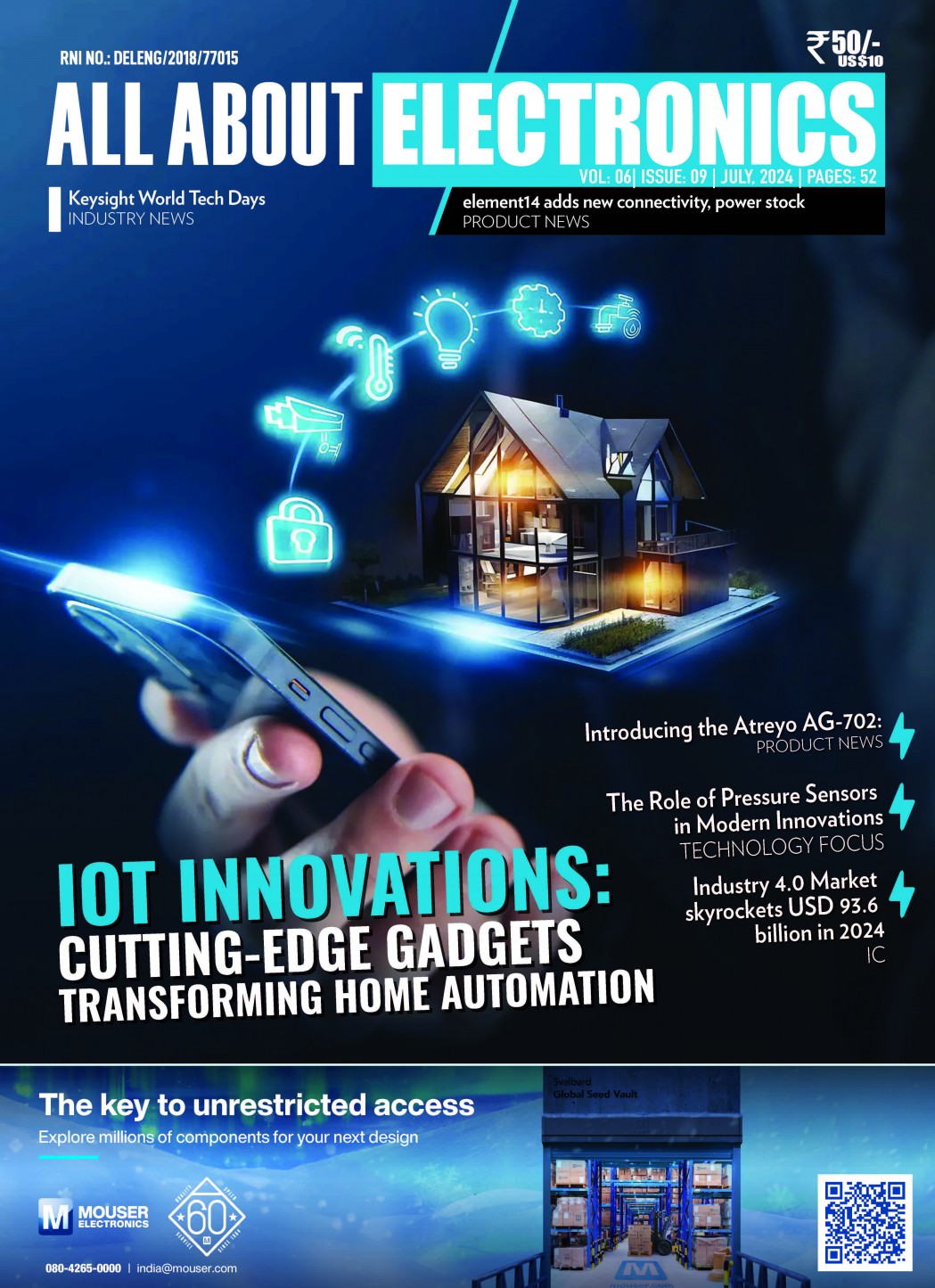Source : Mouser Electronics
When we discuss the Internet of Things (IoT), we generally consider the consumer side. Applications like smart homes and consumer ecosystems have become the most popular uses for the IoT, but, in reality, the field extends far beyond these examples.
One of the most exciting and important applications for the IoT is in the industrial sector. However, to truly benefit from the potential of the IoT, the industrial sector needs a way to create interoperability between devices that originate from disparate manufacturers. Matter has solved this challenge in the smart home space, and many believe its example can provide a path forward for the industrial sector.
In this blog, we’ll discuss the Industrial Internet of Things (IIoT), Matter’s impact in the smart home space, and how the industrial sector can apply these concepts to improve the factory floor.
The Industrial Internet of Things (IIOT)
In general, “IoT” describes an ecosystem of interconnected devices that share data and information, which generally originate from onboard sensors. While the most mainstream application for the IoT is the smart home, the IoT also has huge potential in the industrial sector.
The IIoT refers to the application of the IoT on the factory floor. Here, disparate factory floor devices—such as industrial machinery, control devices, and other general devices such as heating, ventilation, and air-conditioning systems and lighting systems—are all able to communicate with operators and one another in real time.
In the industrial context, the IoT is an important technology because it has the potential to enable devices to share insightful data about factory floor operations with a central hub and with human operators. For example, an IIoT-enabled factory machine could share information about its operation compared to an accepted baseline, helping to indicate when it may need maintenance or service.
Today, most IIoT devices can communicate with their operators, but many still cannot communicate with one another. This is primarily due to the fact that the IIoT devices on a factory floor often come from different manufacturers, meaning they were not designed explicitly to be interoperable with one another.
To truly unlock the potential of the IIoT, however, these disparate devices need to communicate with each other and make actionable decisions based on those data.
Setting the Example for the Industrial Sector
While device-to-device interoperability remains a challenge in the industrial sector, the smart home has already found a solution sponsored by the Connectivity Standards Alliance (CSA) and supported by its membership of the leading home automation suppliers and vendors. That solution is Matter.
Matter is a membership-driven standard for home automation that aims to reduce fragmentation between different IoT vendors. Specifically, Matter defines a standard communication protocol that ensures that all Matter-certified devices are capable of interoperability.
The impetus to develop Matter came from the same situation the industrial sector is facing today: The smart home market is too fragmented. A modern smart home consists of devices from a variety of manufacturers, none of which are designed to work together. However, the smart home industry overcame this challenge through the collaborative development of Matter.
Therefore, Matter can be viewed as an example for the industrial sector: Through industry collaboration, device interoperability is indeed possible.
Matter sets the gold standard in terms of security. Uniquely, Matter was designed with device security and privacy in mind, consisting of requirements on the device hardware level all the way up to the system level, where the standard incorporates a number of privacy-preserving measures.
Privacy-preserving measures are crucial in industrial applications where communicated data are likely proprietary to a company. Hence, Matter also provides a strong example of creating IIoT device interoperability without compromising security.
Improving the Factory Floor
With the example set by Matter and the comprehensive technology set forth by the IIoT, some very powerful industrial use cases could be unlocked. Specifically, device-to-device interoperability in the IIoT could enable commercial facilities that are truly automated and scalable.
In an industrial setting, one is likely to find an array of different devices, including circuits for controlling industrial power, lighting systems, factory machinery, and more. When these devices are deployed independently of one another, they each can perform their own task, but the factory as a whole lacks synergy and cohesion.
For example, consider an assembly line where an upstream machine assembles a part and sends it to a downstream machine for further assembly. Now consider that the upstream machine fails and begins producing faulty parts. Without device-to-device communication, the downstream machine has no way of knowing about these failures and could continue operating on faulty parts, which risks further compounding the errors and potentially leads to machine damage and lost profits.
Instead, with a factory floor full of interoperable machines, each device can know the status of the other devices and can make insightful decisions accordingly. For example, once aware of the upstream device’s failure, the downstream device could instead cease operations and notify a human operator to intervene. In this way, IIoT device interoperability could enable factories with higher autonomy and less need for human intervention, ultimately leading to greater productivity, reliability, and safety.
Device-to-device interoperability in the IIoT also helps factory owners scale and upgrade their equipment with ease. Without a standard like Matter, creating an IIoT ecosystem where devices are interoperable requires employing devices from a single vendor. This makes replacing or adding equipment to a factory floor difficult because limited options exist for factory owners who want to stay within their ecosystem.
With a Matter-like solution, factory owners instead have the freedom to choose from any number of suppliers when upgrading or adding functionality to their floors without sacrificing their systems’ cohesion.
Conclusion
For the IIoT to achieve its full potential, the industrial sector requires interoperability for disparate IIoT devices. With the example set by Matter, the industrial sector has a clear path forward to creating a factory floor that is safer, more productive, and more profitable than otherwise possible.
To learn more, visit www.mouser.com












